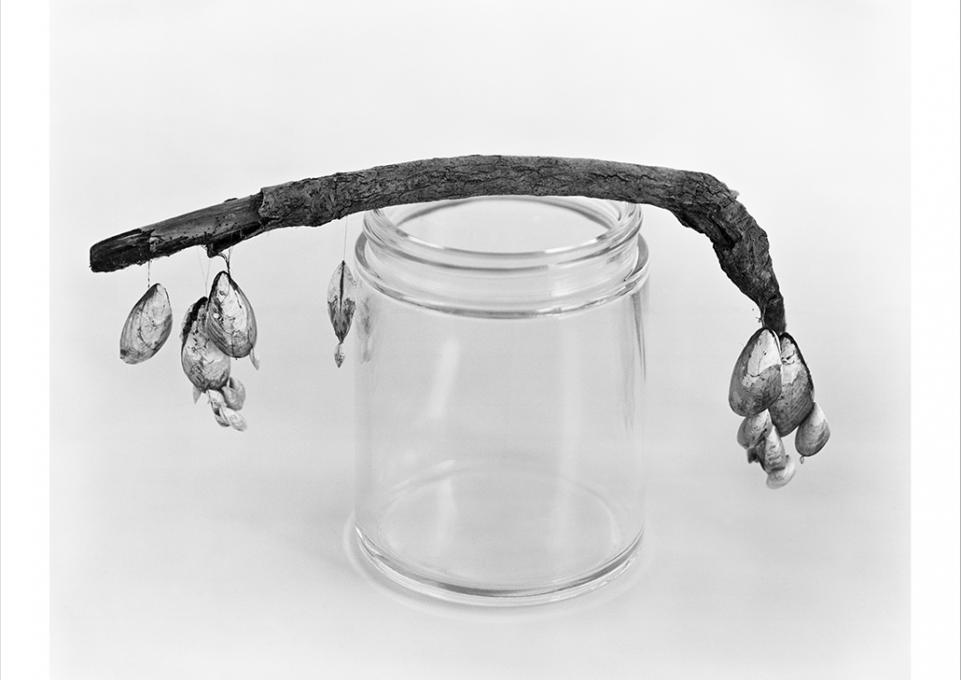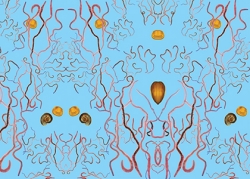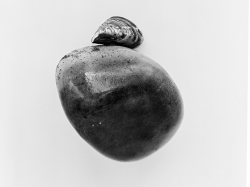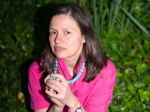
Soon after Yola Monakhov Stockton, a Moscow, Russia, native and director of Buffalo State’s photography program, met Lyuba Burlakova and Alexander Karatayev, married biologists who run the Great Lakes Center, she was intrigued by how the fellow Russians ended up in Buffalo.
“I quickly realized that they had followed the path of the quagga mussel,” Monakhov Stockton said. “I started working with Lyuba and Alexander by bringing my class to their center and expressing an interest in documenting their work.”

In September 2018, the scientists invited Monakhov Stockton to join them aboard the research vessel Lake Guardian as part of a Cooperative Science and Monitoring Initiative (CSMI) to generate data and information for environmental management agencies.
A four-day excursion on Lake Ontario, combined with a fine eye for composition and detail, resulted in a solo photography exhibition in a Los Angeles art gallery.
Monakhov Stockton’s Notes from the Bottom recently opened at the Garden Gallery and is on view through November 2.
 “I was looking to create an interpretation of the scientific process, so I was open to photographing the samples themselves, which included not only mussels, the main subject of their study, but also other species like copepods,” she said. “At the same time, I wanted to photograph their instruments—the process by which the data is extracted, documented, and interpreted.”
“I was looking to create an interpretation of the scientific process, so I was open to photographing the samples themselves, which included not only mussels, the main subject of their study, but also other species like copepods,” she said. “At the same time, I wanted to photograph their instruments—the process by which the data is extracted, documented, and interpreted.”
Monakhov Stockton, an assistant professor in the Art and Design Department, officially went on the boat in a scientific capacity in order to get approval from the Environmental Protection Agency (EPA).
“I worked on the sampling and elutriation [cleaning the samples and extracting the water] process,” she explained. “The Lake Guardian had never previously hosted an artist, or indeed, anyone who is not a scientist, so I felt honored to be aboard.”
Monakhov Stockton reflected on the relationship between artist and specialist, the nature of documentary, the definition of invasiveness, and the migratory journeys of all things.
 “I am reminded that human beings are the most invasive species, as I think of the landscape of the Americas before our arrival,” she said. “It may be safe to say that the mussels are both a metaphor and something real, that their invasion is an issue but also a reality. There is a beauty to their relentless drive to colonize everything, and to hang on, before they, too, give way to the next invader. It was not long before that we were terrified about the zebra mussel, but once the quagga appeared, the zebra were gone, and now the quagga dominate.”
“I am reminded that human beings are the most invasive species, as I think of the landscape of the Americas before our arrival,” she said. “It may be safe to say that the mussels are both a metaphor and something real, that their invasion is an issue but also a reality. There is a beauty to their relentless drive to colonize everything, and to hang on, before they, too, give way to the next invader. It was not long before that we were terrified about the zebra mussel, but once the quagga appeared, the zebra were gone, and now the quagga dominate.”
She added that it was enlightening to work alongside the scientists who are so tireless and thorough.
“I thought if my students could see the care and the endless repetition, the attention to the smallest detail, and the willingness to follow a process through and through—we were on 12-hour shifts, mind you—how much they could learn,” she said. “But as an artist, one has great freedom to follow the rules, but to bend them toward artistic ends.”
Photos by Yola Monakhov Stockton. Note: Images shown are cropped (detail) versions of original works.
 About Yola Monakhov Stockton
About Yola Monakhov Stockton
Yola Monakhov Stockton joined Buffalo State’s Art and Design faculty in 2016. Her photographs have graced the pages of such publications as the New Yorker, Harper’s Magazine, Le Monde, Marie Claire, Newsweek, the New York Times, Der Stern, and Time.
Photo courtesy of Patrice Helmar.
